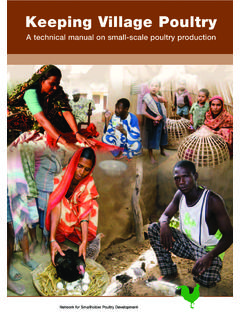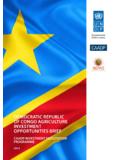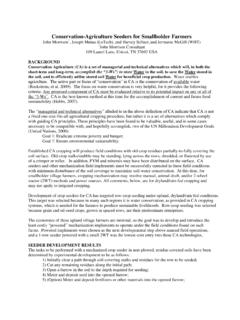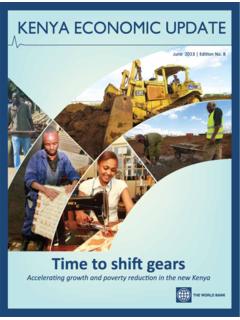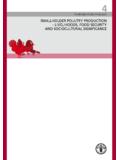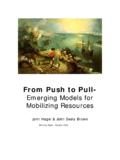Transcription of “THE BIG DREAM; A GLIMPSE AT UGANDA’S FUTURE: …
1 1 THE BIG DREAM; A GLIMPSE AT uganda S future : HIGHLIGHTS OF VISION 2040 A KEYNOTE ADDRESS BY DR ABEL RWENDEIRE DEPUTY CHAIRPERSON NATIONAL PLANNING AUTHORITY AT THE CELEBRATION OF GOLDEN JUBILEE OF uganda S INDEPENDENCE AT BUNKEREI IM AUGARTEN, OBERE AUGARTENSTRASSE 1A, 1020 VIENNA ON SUNDAY 7TH OCTOBER 2012. Sponsored By: Vienna Institute of International Dialogue and Cooperation, Austrian development Agency and Austria- uganda Friendship Association. 2 GRATITUDE FOR GRACIOUS INVITATION I would like to thank the Austria- uganda Friendship Association for inviting me to celebrate the uganda s Golden Jubilee with you and particularly the Vienna Institute of International Dialogue and Cooperation together with Austrian development Agency for facilitating my travel to and accommodation in Vienna. Furthermore I bring you warm greetings from the government and the people of uganda at this historic time in the democratic life of our country. BACKGROUND Now I wish to share with you what the National Planning Authority (NPA) has been doing in the fulfilment of its mandate of producing development plans elaborated in terms of long term perspective vision translated into long term and medium term development plans.
2 In the last four years NPA moved quickly to formulate the five year National development Plan (NDP) 2010/11-2014/15 to replace the Poverty Eradication Action Plan (PEAP) that had focused mainly on reducing the poverty but was unable to elicit the necessary stimuli for socio-economic transformation due to its emphasis on social services and less on productive sectors of the economy. In our planning Framework this NDP is the first in a series of six NDPs that will have to be implemented in order to realise the 30 year Vision of 2040. The work of formulation of the National Vision had been started long before the NDP formulation exercise kicked in but it had to be shelved to allow the NPA technical team deal with the formulation of the NDP since PEAP had expired and had not been any policy document to replace it. However in the process of gathering the views of the people of the NDP it was also possible to get also their views on what they wanted to see done in the long term development .
3 Hence the following were the aspiration of the people as to what they would want to see happen in the next thirty years. 3 FACT SHEET ON uganda Location Location Location Location East Africa and neighbouring; Kenya to the east, Tanzania to the south, Rwanda to the south-west, Democratic Republic of the Congo to the west, and South Sudan to the north. Area Area Area Area Total : 241 038sq km; Land: 197,100sq km; Water: 43 938sq km Population Population Population Population YearYearYearYear 2007200720072007 2010201020102010 2011201120112011 Total 30 263 000 31,848,169 32,939,800 Female 51 per cent per cent per cent Male 49 per cent per cent per cent Land use Land use Land use Land use Arable land ( per cent); permanent crops ( per cent); other ( per cent) GDP (Nominal) Billion US$ 17 billion (2010/11) GDP per capita Growth rate percent (2010/11) Real GDP Growth Rate percent (2010/11) Budget deficit percent (2010/11) Long-term debt (DOD, current US$) billion (2010/11) Workers Remittances Received (US$) 79 million per month (2009) Trade Exports US$ billion (2010/11) Imports (US$) billion (2010/11) Foreign Direct Investment US$ (2010/11) SYNOPSIS OF ASPIRATIONS OF UGANDANS a.
4 Ugandans aspire to live and work in a peaceful, secure, harmonious and stable beautiful country where the rule of law prevails and respect for fundamental human rights observed. Ugandans want a corruption free nation with strong democratic structures and systems with demonstrated serration of powers for checks and balances. b. Ugandans aspire to have unity in diversity and equal opportunities irrespective of gender, tribe, ethnicity or religion enshrined in the hope of a progressive and developmental culture that blends traditional beliefs and national values. c. Ugandans desire to be resourceful and prosperous nationals contributing to national development through gainful employment, savings and investments while accessing affordable quality health and education services that are globally competitive. 4 d. Ugandans would like to live in clean and well planned urban/rural settlements with world class infrastructure and services for a society free of hunger with food surplus and strong social safety nets for the vulnerable groups.
5 E. Ugandans aspire for a morally upright God fearing society with values of love, care, fairness, justice, respect, truth and hope. ECONOMIC PERFORMANCE Over the last 30 years, uganda s planning frameworks have focused on short to medium term horizons. However, experience shows that long term planning is a key factor in propelling socioeconomic development and equitable distribution of wealth in many countries all over the world. For example, a number of East Asian countries (Malaysia, Singapore, South Korea, and Thailand) adopted long term planning to guide their development paths. The long term planning helped to guide Governments in these countries to intervene strategically through multiple approaches to foster growth. 1. To operationalize this Vision, a draft uganda Vision 2040 has been prepared. The Vision articulates clear strategies and policy directions to transform the country into a competitive upper middle income country with per capita income of USD 9500.
6 It is expected that over the Vision 2040 period, average real GDP growth rate will be above per cent per annum translating into total GDP of about USD (from USD17bn in 2010) with a projected population of (from in 2010). 1960196219641966196819701972197419761978 1980198219841986198819901992199419961998 200020022004200620082010 GDP per capita (US$) uganda 's Economic Growth Performance, 1960-2010 UgandaSouth AfricaMalaysiaMauritiusBotswanaKorea, 2. Figure 1: Scenarios for Achieving the Upper Middle Income Status by 2040 3. To project the likely growth paths during the Vision period, two different growth path scenarios have been considered: the lower bound and the upper bound. However, the likely growth path will be between the two scenarios. The choice of these scenarios is also based on the analysis of experiences of countries that have been able to achieve the upper middle income status within a period of 30 years.
7 These scenarios are shown in figure 1. 4. This Vision builds on the previous efforts, lessons learnt and analysis of our past development strategies including Vision 2025 and Vision 2035. It also incorporates emerging development prospects and associated challenges including the discovery of oil and gas reserves, E-revolution, globalization and regional economic integration among others. 5. In the next section constraints to uganda s development are pointed out while Section four deals with opportunities and section five discusses the strategies for harnessing the opportunities. The final section provides key policy options needed to be taken to realise the Vision 2040. -100 200 300 400 500 600 700 800 200020052010201520202025203020352040 Amount (Billion, US$)Upper BoundLower BoundLikely6 WHAT IS CONSTRAINING uganda S development ? 6. The World Economic Forum defines competitiveness as a set of institutions, policies, and factors that determine the level of productivity of a country and its Report of 2011-2012, uganda ranks 121 out of 142 countries in terms of overall competiveness of its goods and services.
8 The key challenges to competiveness in the country include; weak institutions; low levels of innovation; poor infrastructure; low and inappropriate skills; weak financial markets; low technology uptake, low labour market efficiency; high incidence of corruption; high cost of finance and low access to credit; high tax rates; poor work ethic; and excessive government bureaucracy. 7. uganda does not have a national value system which is subscribed to by every citizen. As a result, national mobilization on key development pillars becomes a big challenge. Some of the big threats to economic growth and transformation such as corruption and the unconducive work ethic would be easier to handle if the country had a national value system which would be inculcated in every Ugandan right from childhood. 8. uganda s exports are still largely dominated by primary products whereas imports are becoming technically more advanced.
9 This means that the country consumption patterns are changing faster than transformation of its techniques of production. 9. uganda has one of the youngest populations in the world with nearly half of them aged below 15 years due to a high fertility rate of about children per woman. This has resulted in an unfavourable demographic profile made up largely of dependents. These dependants are either too young or too old to work, and yet they consume the bulk of public services. 10. Climate variability and change is real in uganda and has led to increased frequency and severity of natural impacts such as droughts, floods and landslides. It has had serious socioeconomic implications with regard to food security, health and economic development . OPPORTUNITIES 11. uganda s vision of achieving faster socio-economic transformation is built on the premise that the country has a number of opportunities that are to date considerably under-utilized.
10 Achieving the transformational goal will thus 7 depend on the country s capacity to strengthen the fundamentals for harnessing opportunities. Some of the key opportunities are discussed below. Agriculture 12. Agricultural production in uganda is mainly dominated by smallholder farmers engaged in food and industrial crops, forestry, horticulture, fishing and livestock farming. The country is one of the leading producers of coffee and bananas in the World. It is also a major producer of tea, cotton, tobacco, cereals, livestock and fishing products among many others. 13. The opportunity for value addition through agro processing is enormous. This will enhance uganda s competitiveness on the world market, boost foreign exchange earnings and employment. It can also reduce wastage, enhance food security, improve livelihoods for low-income groups and empower disadvantaged groups of society like rural women, youth and the disabled.

